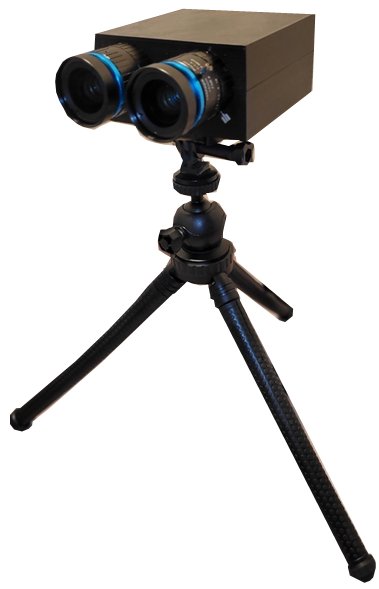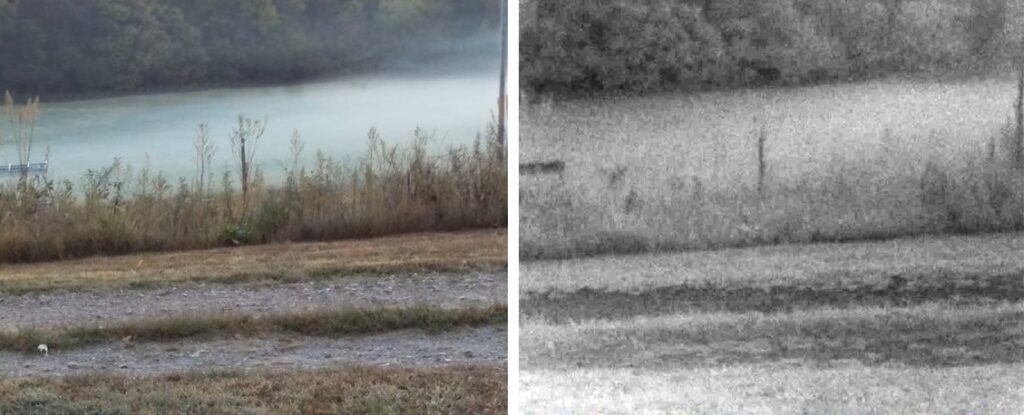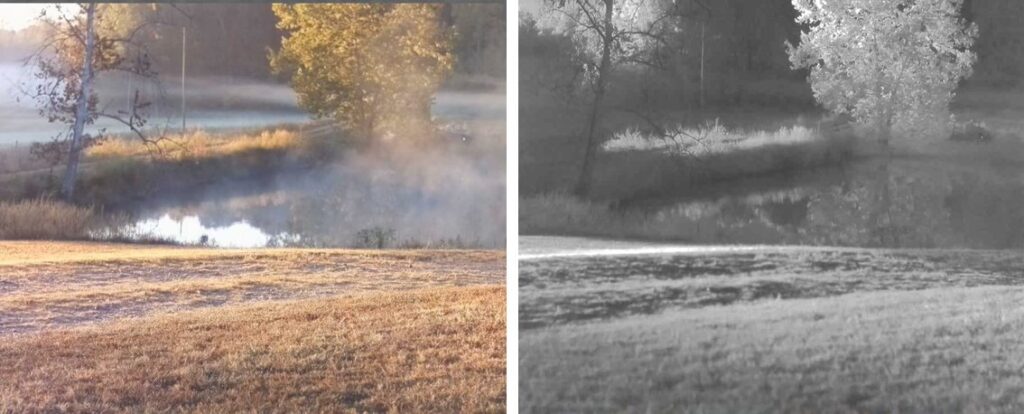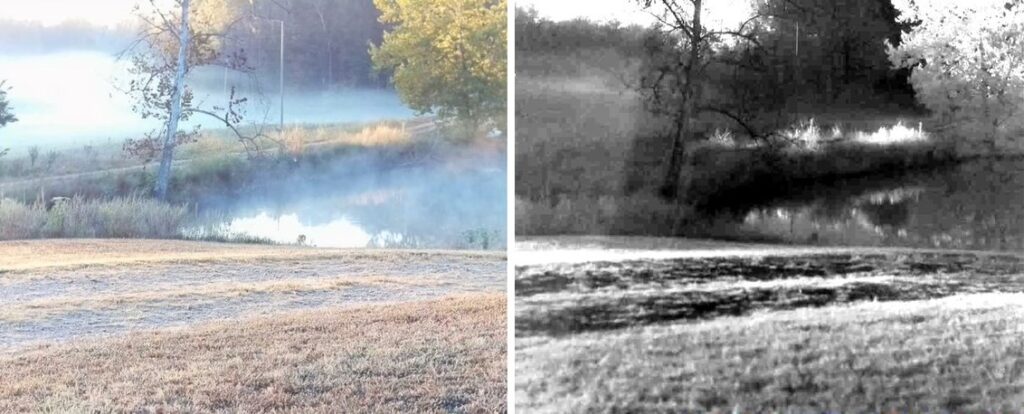Viewing Through Fog and Clouds
BRC holds a patent on a unique device and method for seeing through fog and light clouds. This technique can be applied to any visible imager or video camera that can have its NIR filter replaced with the BRC FogCutterTM filter. Example performance of this device and method are shown below.

This method exploits the optical properties of water by limiting the viewing passband to a water absorption band. In this way fog droplets absorb rather than scatter the light allowing more distant dimmer objects to be visible. The limit of the effect is when no light reaches the imager from the objects of interest. With the addition of machine vision software, the FogCutterTM method essentially doubles the viewing range at whatever density of fog is present. We have fabricated a number of FogCutterTM systems for a variety of applications including an active demonstrator camera system that simultaneously collects images and video showing visible and FogCutterTM performance.


Most recently we have built a dual-imager video camera to collect side-by-side images in the visible and the FogCutterTM passbands simultaneously. A few sample comparison images are shown here.



